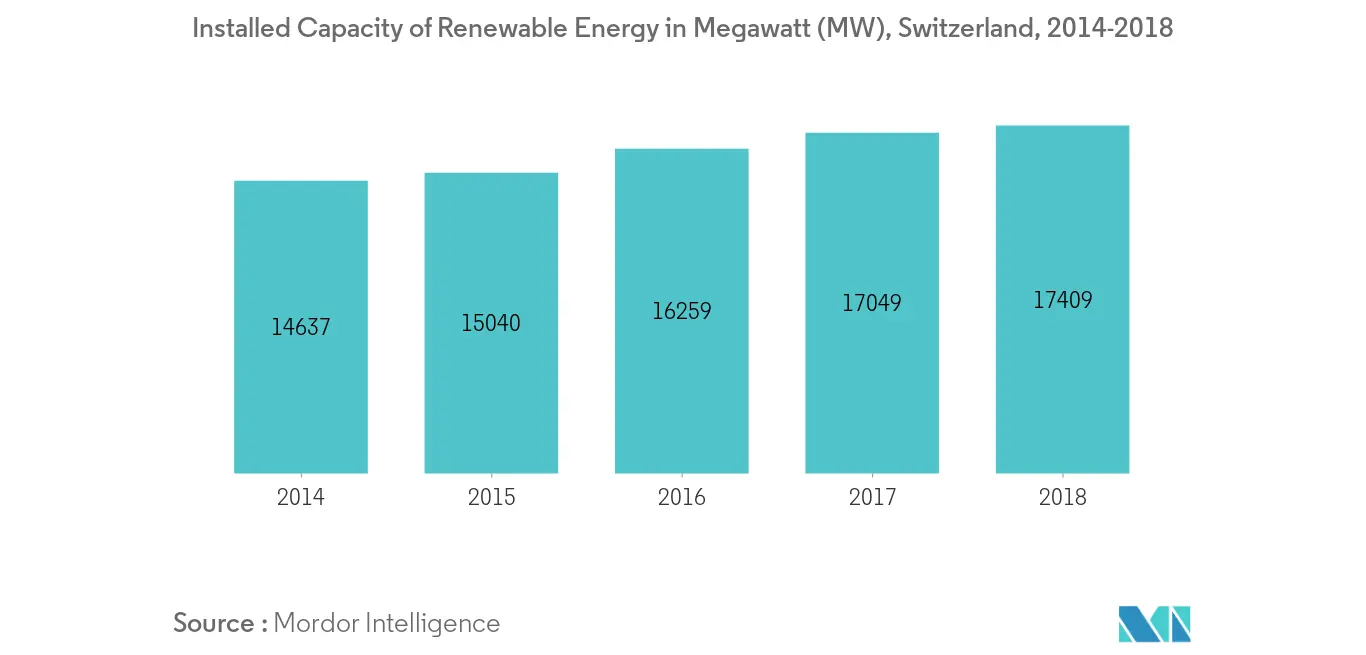Market Trends of Switzerland Renewable Energy Industry
This section covers the major market trends shaping the Switzerland Renewable Energy Market according to our research experts:
Hydro Power Segment to Dominate the Market
- As of 2018, out of total electricity generated by renewable sources, 90% was produced by hydropower in the country, amounting to 37,802 gigawatt-hour, which was higher than the previous year's record of 37,033 gigawatt-hour (GWh).
- Due to the mountainous landscape and numerous rivers in the country, Switzerland has more than 500 hydropower plants with the capacity equal to or greater than 300 kilowatts (KW). Out of these hydro plants, 47% are run-of-river power plants, 49% are storage power plants, and the remaining 4% is pumped storage power plants. Approximately two-thirds of the electricity generated in the country is by hydro energy.
- As of 2019, Nant de Drance hydropower plant is under construction and is expected to be fully operational by 2021. The power plant has the capacity of 900 megawatts (MW) and is expected to generate 2500 gigawatt-hour (GWh) of energy annually.
- In 2019, Apox started a pilot project of a digital hydropower plant in Kraftwerken Sarganserland, Switzerland. The pilot team is going to implement 20 different ways for the next one year, after which the next steps for the digitalization is likely to be finalized.
- Therefore, owing to the above points, it can be stated that hydro energy is likely to dominate the Switzerland renewable energy market during the forecast period.

Increasing Renewable Energy Installations Expected to Drive the Market
- In 2018, more than 30% of the electricity generation in the country was from renewable energy sources and remaining from nuclear energy. The government of Switzerland has planned to reduce greenhouse gases emission by 50% from the value of 1990 by 2030 by installing more renewable energy generation plants. In 2018, the electricity generation from renewable energy was 41,754 gigawatt-hours (GWh).
- In 2018, the total renewable energy generation plant installed capacity was 17,409 megawatt (MW), which was higher than the installation capacity of 2017, 17,049 megawatts (MW).
- In 2019, the Romande Energie Company unveiled the first part of its floating solar project in Bourg-Saint-Pierre, after six years of exploratory work. A solar panel project which could power over 6,000 households has been launched in a mountain lake in southwestern Switzerland.
- In 2019, Apox announced a solar plant with over 6,000 photovoltaic modules would be installed on the dam in the Glarus Alps. The plant will produce approximately 2.7 gigawatt-hours of electricity per year, equal to the consumption of 600 households. The solar plant will cover a surface of 10,000 square meters. Thus combinig solar energy with the hydro energy, which make both more efficient and reliable.
- Hence, the above points indicate that increasing renewable energy installed capacity is expected to drive the Switzerland renewable energy market during the forecast period.


